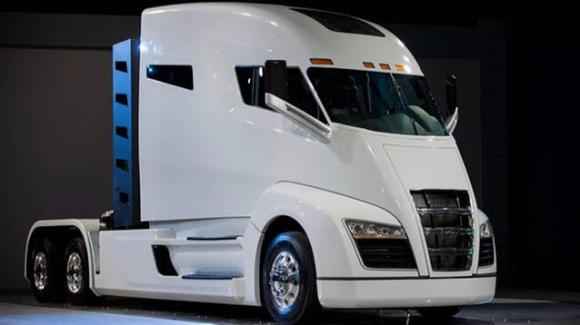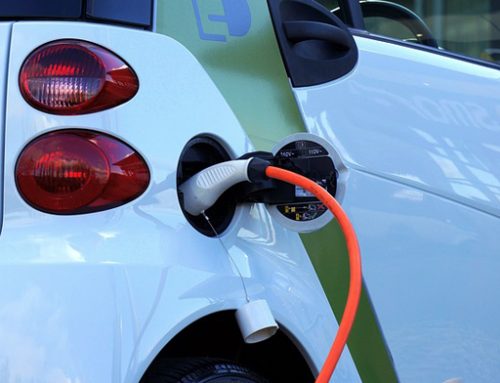After successfully completing his “Master Plan Part One”, Elon Musk is moving on to “Part Deux” and once again, the industry is taking note.
Tesla has transitioned into a fully-fledged motor industry contender, with the successful roll out the Model X, Model S and mass market family car, Model 3. Now, Musk is on a new mission to revolutionize freight transportation with the Telsa Semi Truck.
Even at this concept stage, the Semi, is already having a major impact. Not surprising, given that if Tesla’s claims about their new model are true, it may be the beginning of the end freight transport as we know it.
The major selling point of the Semi for transport companies will be the predicted saving that investing in a fleet of Semi trucks would bring. Tesla claim that this new e-truck will provide, a staggering saving of $200,000 over a million miles based on fuel alone. However, there are many more advantages to the Semi than just fuel saving.
The truck can also reach 0-60 in 5 seconds and 0-60 mph in 20 seconds with a full load, making the Semi the fastest truck on the road with diesels averaging 0-60 in 15 seconds and 1 minute fully loaded. On a 5% grade, the Semi can reach speeds of 65MPH. It has a staggering 500 mile range with a 36 ton capacity. It also provides a 400 range charge in 30 minutes using the Tesla Mega Chargers which will be available on a worldwide network.
This is a massive increase in speed capacity would significantly increase route times and overall productivity for transport companies.
All trucks come with a degree of autonomy, including auto-pilot, regenerative brakes and lane keeping. It also has state of the art responsive technology as standard.
With regard to road safety, one huge safety element that the Semi boasts is the eradication of jack-knifing due to on-board sensors that detect instability and can positively or negatively torque each wheel independently, activating all brakes.
Tesla also guarantees that due to the truck’s four motors, it can travel without risk of breakdowns for 1 million miles. Musk claimed at the unveiling in 2017 that even with motor issues the Semi could out drive any other truck, “even if you only have two of the four motors active it will still beat a diesel truck”.
With no engine or transmission, there is very little maintenance involved with the Semi. The Tesla driver app provides status information about potential issues that may occur with the vehicle.
The Semi spec sounds almost too good too good to be true and many watchers are doubtful that the Semi is a realistic proposition. However, this hasn’t stopped Tesla’s fellow car manufacturer taking action.
Daimler, the current market leaders in freight transport have designed a rival truck, the eCascada. This latest addition to their growing e-truck line is due to go into production in 2020 and has a 250-mile range max. At the launch of their electric truck, the eActros, Daimler’s head of trucks, Martin Daum, expressed doubt about Tesla’s Semi, inferring it is a design impossibility. “If Tesla really delivers on this promise, we’ll obviously buy two trucks — one to take apart and one to test because if that happens, something has passed us by. But for now, the same laws of physics apply in Germany and in California.” Daimler say they are not concerned about any potential competition from Tesla. Martin Daum, Daimler board member for trucks and buses said: “We were first-movers on electric trucks and strive to set the standard in each relevant segment in which we compete. With the formation of our new global e-mobility group, we will maximize the impact of our investments in this key strategic technology. Thus, we can pursue the best solutions in batteries, charging solutions and energy management.”
It’s watching and developing similar e-trucks. S-sis in the EV market., (like Tesla, named after Nikola Tesla), are on several e-trucks and unveiled their Nikola One and Two back in 2016. TheC is strong competition for Tesla. The hydrogen powered vehicle, boasts an incredible 500-1000 miles of range. Similar to the Semi, the Nikola One has individual electric motors, six in total which provide incredible 1,000 horsepower and 2,000 lb-ft of torque The Nikola One is set to go into production from 2020.
For most manufacturers, the introduction of rival vehicles would be a major issue. However, for Elon Musk and the Tesla brand their outlook is very different. On the face of it, Telsa seem to welcome their market counterparts who produce EVs and see it has a step closer to their overall mission which is “to accelerate the advent of sustainable transport by bringing compelling mass market electric cars to market as soon as possible.”
Whether Tesla can roll out the Semi with all its bells and whistles by 2019 remains to be seen. However, what is in no doubt is that there EV revolution is here, changing the face of transport and the motor industry as we know it.






